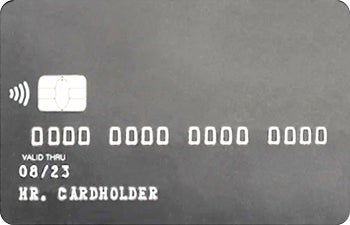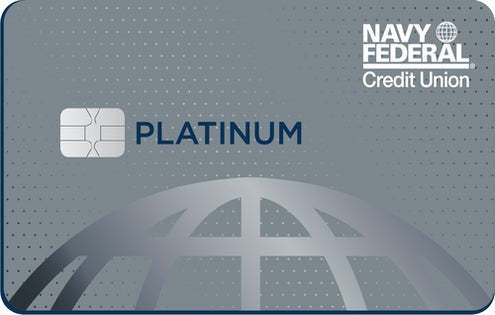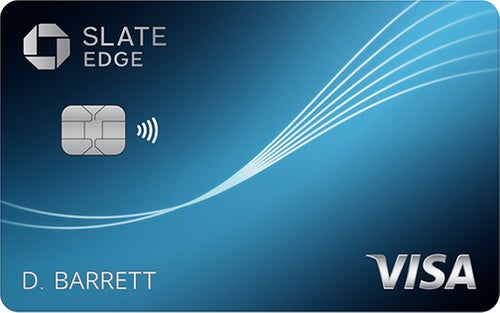Credit card interest rates, or APRs, have been on a steady climb this year as the Federal Reserve has raised rates to combat inflation. This means that credit card debt is becoming more expensive, and new debt will be subject to a higher interest rate.
But the Federal Reserve isn’t the only factor contributing to your credit card APR and the cost of your debt. Your credit score and credit history ultimately determine where your specific APR falls within a credit card’s set range. Credit cards for people with good credit typically offer lower APRs than credit cards for people with bad credit.
Regardless of your specific interest rate, carrying a balance will cost you. A commonplace 20% APR on a $1,000 balance over one year will add $200 to your debt. But there are many types of APRs and things you can do to minimize the interest you pay. We break it all down below.
What is a good credit card APR?
The average APR on a credit card is just over 20%, according to data from Bankrate, a CNET sister site. If your credit card APR is higher than that, it may be worth shopping around, especially if you’re carrying a balance.
Credit card issuers have been bumping up APRs in the wake of Federal Reserve rate hikes. You may not receive an explicit disclosure if your credit card interest rate increases, so make sure to keep an eye on your statements.
Types of credit card APRs
First, let’s explore the different types of annual percentage rates for credit cards.
Purchase APR: A purchase APR -- the standard APR you’ll most often hear about without the word “purchase” in front of it -- is for any new purchases made on your credit card. The purchase APR applies to your balance that’s carried into the next billing cycle.
Introductory APR: Also called a promotional APR, this is a special offer often used to entice new cardholders. 0% introductory APRs are typically restricted to a certain period of time after account opening, such as 12 or 18 months.
Cash Advance APR: Most credit cards allow you to withdraw money against your card’s line of credit in the form of a short-term loan, but issuers will usually charge a cash advance fee. On top of that fee, cash advances carry a separate, and often higher, interest rate than purchase APRs.
Balance transfer APR: If you want to transfer the balance from one credit card to another card, a balance transfer APR applies.
Penalty APR: Penalty APRs typically apply to late payments. While charges vary, some penalty APRs are as high as 30% for payments later than 60 days.
Before you commit to a credit card, be sure to consider APRs in their entirety, especially which APRs come into effect after the promotional period ends. From here on, we’ll be discussing the most common rate credit card users deal with: purchase APRs.
How to qualify for a good credit card APR
It pays to know how you might qualify for a lower credit card APR for everyday purchases. Credit card issuers most often look to your FICO credit score to determine how likely you are to make full payments on what you spend.
“To qualify for a good APR, you’ll need a good credit score,” says John Li, co-founder and CTO of the financial lending company Fig Loans. “With good behavior, your credit score will start to push upward in about six months.”
FICO Credit Score
|
Credit score |
Type of credit |
|
300-579 |
Poor |
|
580-669 |
Fair |
|
670-739 |
Good |
|
740-799 |
Very Good |
|
800-850 |
Exceptional |
U.S. Bank Visa® Platinum Card
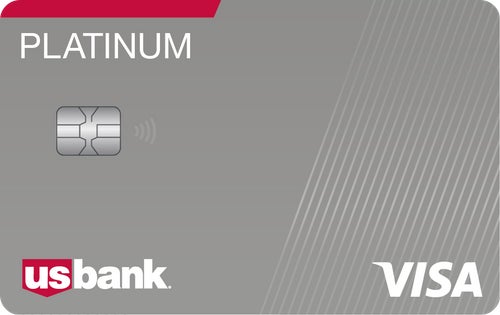
With a 0% introductory APR offer on purchases and balance transfers for 21 billing cycles (18.74% to 29.74% variable APR thereafter), this card offers one of the longest 0% intro APR periods of any credit cards with no annual fee on the market.
See our full review of the U.S. Bank Visa Platinum for more details.
- Intro Balance Transfer APR
- 0% intro APR for 21 billing cycles on balance transfers
- Intro Purchase APR
- 0% intro APR for 21 billing cycles on purchases
- Regular APR
- 18.74% – 29.74% (Variable)
- Balance Transfer Fee
- Either 3% of the amount of each transfer or $5 minimum, whichever is greater
With a 0% introductory APR offer on purchases and balance transfers for 21 billing cycles (18.74% to 29.74% variable APR thereafter), this card offers one of the longest 0% intro APR periods of any credit cards with no annual fee on the market.
See our full review of the U.S. Bank Visa Platinum for more details.
- Intro Balance Transfer APR
- 0% intro APR for 21 billing cycles on balance transfers
- Intro Purchase APR
- 0% intro APR for 21 billing cycles on purchases
- Regular APR
- 18.74% – 29.74% (Variable)
- Balance Transfer Fee
- Either 3% of the amount of each transfer or $5 minimum, whichever is greater
For a low APR over time, the Discover it® Cash Back offers a variable APR as low as 17.24% for eligible cardholders, trumping industry averages.
For more information, see our full review of the Discover it Cash Back.
- Intro Balance Transfer APR
- 0% for 15 months
- Intro Purchase APR
- 0% for 15 months
- Regular APR
- 17.24% – 28.24% Variable APR
- Balance Transfer Fee
- 3% intro balance transfer fee, up to 5% fee on future balance transfers (see terms)*
For a low APR over time, the Discover it® Cash Back offers a variable APR as low as 17.24% for eligible cardholders, trumping industry averages.
For more information, see our full review of the Discover it Cash Back.
- Intro Balance Transfer APR
- 0% for 15 months
- Intro Purchase APR
- 0% for 15 months
- Regular APR
- 17.24% – 28.24% Variable APR
- Balance Transfer Fee
- 3% intro balance transfer fee, up to 5% fee on future balance transfers (see terms)*
Gold Visa® Card
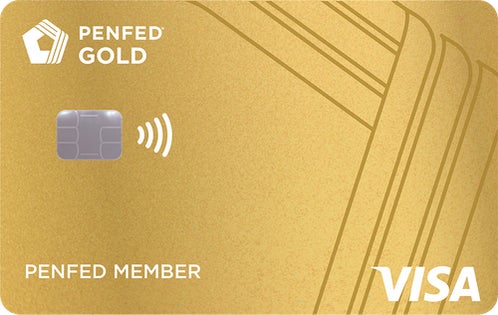
You may be able to score a variable purchase APR of 17.99% with this card.
- Intro Balance Transfer APR
- 0% introductory APR for 15 months on balance transfers made in the first 90 days after account opening
- Intro Purchase APR
- 0% Introductory APR on purchases made the first 15 months after account opening
- Regular APR
- 17.99% Variable APR
- Balance Transfer Fee
- 3% fee applies to each transfer
You may be able to score a variable purchase APR of 17.99% with this card.
- Intro Balance Transfer APR
- 0% introductory APR for 15 months on balance transfers made in the first 90 days after account opening
- Intro Purchase APR
- 0% Introductory APR on purchases made the first 15 months after account opening
- Regular APR
- 17.99% Variable APR
- Balance Transfer Fee
- 3% fee applies to each transfer
You have to be a member of the armed forces, a veteran, Department of Defense employee or immediate family member to join the Navy Federal Credit Union. As a member, you can get a potentially low purchase variable APR of 10.99% or up to 18.00%, depending on your credit.
- Intro Balance Transfer APR
- 0% intro APR for 12 months on balance transfers
- Intro Purchase APR
- N/A
- Regular APR
- 10.99% – 18.00% Variable
- Balance Transfer Fee
- N/A
You have to be a member of the armed forces, a veteran, Department of Defense employee or immediate family member to join the Navy Federal Credit Union. As a member, you can get a potentially low purchase variable APR of 10.99% or up to 18.00%, depending on your credit.
- Intro Balance Transfer APR
- 0% intro APR for 12 months on balance transfers
- Intro Purchase APR
- N/A
- Regular APR
- 10.99% – 18.00% Variable
- Balance Transfer Fee
- N/A
The Chase Slate Edge* provides cardholders with an introductory 0% APR for balance transfers and purchases for 18 months (then 20.49% to 29.24% variable). Just take note that, unlike other introductory APR credit cards, that 18 months begins ticking down as soon as you open your account.
And once that introductory offer ends, cardholders are able to lower the Chase Slate Edge’s APR by up to 2% annually by showing responsible use and making purchases that total $1,000 or more during an anniversary year. That means paying your card off on time while using it regularly.
You can learn more about it in our Chase Slate Edge review.
- Intro Balance Transfer APR
- 0% Intro APR on Balance Transfers for 18 months
- Intro Purchase APR
- 0% Intro APR on Purchases for 18 months
- Regular APR
- 20.49% – 29.24% Variable
- Balance Transfer Fee
- Either $5 or 5% of the amount of each transfer, whichever is greater.
The Chase Slate Edge* provides cardholders with an introductory 0% APR for balance transfers and purchases for 18 months (then 20.49% to 29.24% variable). Just take note that, unlike other introductory APR credit cards, that 18 months begins ticking down as soon as you open your account.
And once that introductory offer ends, cardholders are able to lower the Chase Slate Edge’s APR by up to 2% annually by showing responsible use and making purchases that total $1,000 or more during an anniversary year. That means paying your card off on time while using it regularly.
You can learn more about it in our Chase Slate Edge review.
- Intro Balance Transfer APR
- 0% Intro APR on Balance Transfers for 18 months
- Intro Purchase APR
- 0% Intro APR on Purchases for 18 months
- Regular APR
- 20.49% – 29.24% Variable
- Balance Transfer Fee
- Either $5 or 5% of the amount of each transfer, whichever is greater.
Credit cards with the highest APRs
In 2010, First Premier Bank offered an astonishing 79.9% APR on its credit card. That’s just another reason to review your options carefully before you choose a credit card. Several have APRs that can quickly put you in debt you can’t climb out of.
Higher APRs tend to come with credit cards associated with perks like points, miles and cash back. Bruce Garner of Card Curator explains: “These cards are promoted widely everywhere. Lower APRs tend to be found where there are fewer perks, such as 0% balance transfers and at credit unions.”
Tips for securing a lower APR on your credit card
If you don’t qualify for the rate you want, our advice is to work on improving your credit score. The best way to do this is by paying off your balances in full each month, or working toward this step by paying balances down as much as possible each pay period.
This can take time, however, so there are a few short- and long-term solutions to consider if you need to reduce your APR now.
- Consider 0% introductory APR credit cards: If you need to finance a purchase or transfer a high APR balance, and can pay the amount back the next 12 to 20 months, a 0% introductory APR card can help. Just be sure you can repay the balance in full before the introductory period expires and the APR kicks in. You also want to watch out for balance transfer fees, which can add up if you’re moving a large balance.
- Talk to your credit card provider: In some cases, you can negotiate your current card’s APR, particularly if you have a strong history of making on-time payments.
- Apply for debt consolidation or home equity loans: Personal and home equity loans typically carry lower interest rates than credit cards and might be worth considering if you need more time (two years or longer) to repay your debt.
*All information about Discover it Cash Back, Chase Slate Edge and Navy Federal Credit Union Platinum Card has been collected independently by CNET and has not been reviewed by the issuer.
The editorial content on this page is based solely on objective, independent assessments by our writers and is not influenced by advertising or partnerships. It has not been provided or commissioned by any third party. However, we may receive compensation when you click on links to products or services offered by our partners.
